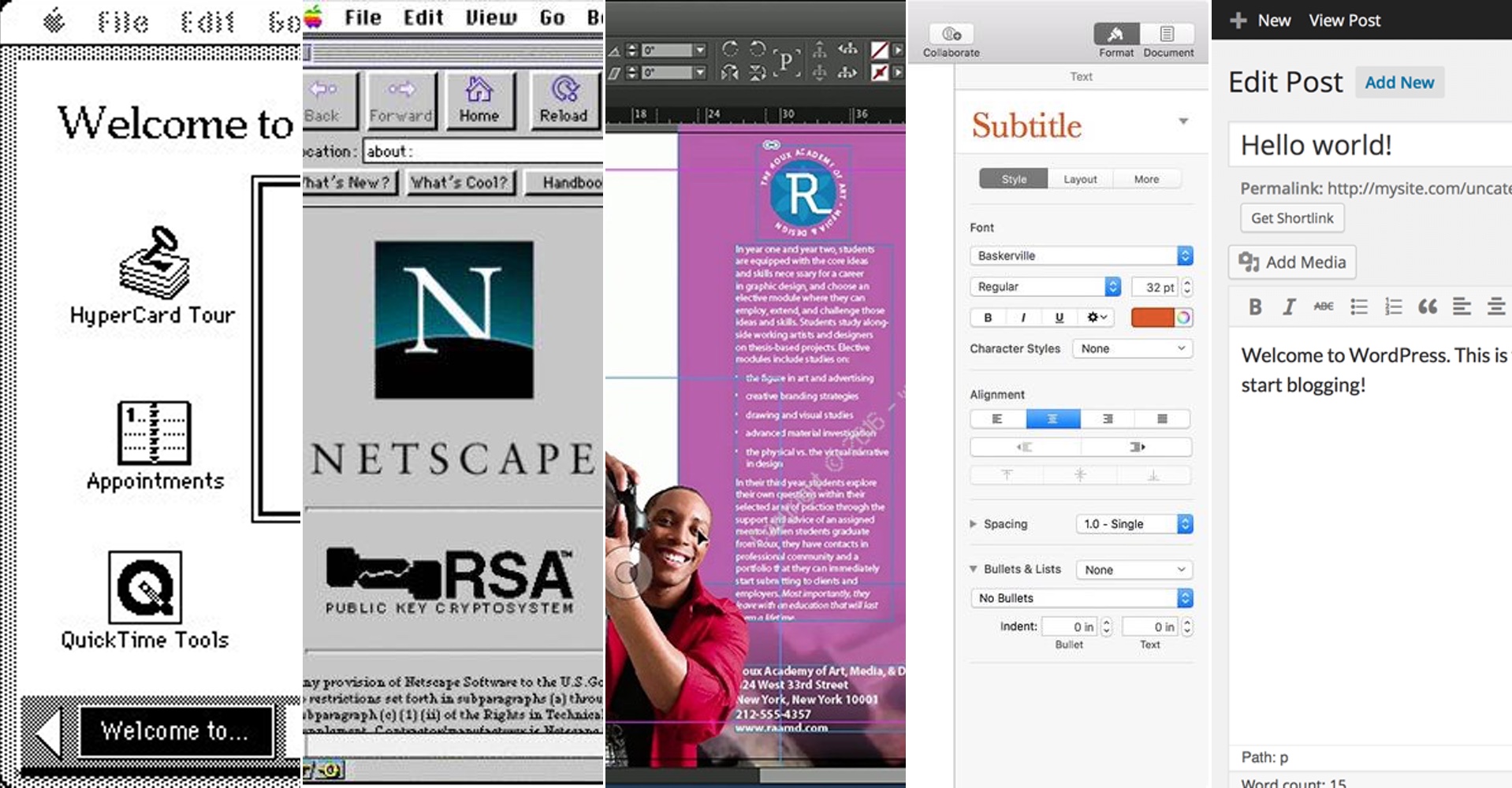Today, we think of content editing tools in the form of word processors, content management systems, and other kinds of visual editors usually used for desktop publishing (a rather out-dated term which refers to print media like newspapers and magazines). For branded emails, builders of different kinds are common. But why is it that each of these types of content editors work so differently from one another?
A brief history of digital text and its tools
Computers brought us digital content and the ability to store it and share it digitally with others. Initially on a black screen with green characters, later with a point and click interface using a mouse. Most infamous for having this ability was the original Macintosh, where documents looked like documents and even had different fonts.
As the concept of using a “desktop” interface evolved, we had word processing along with graphics editors and the ability to add photos. The next great leap was with HyperCard which gave us a way to interact with content by creating a “link” that connected screens together. When the web browser came along, it used the same interaction method to browse between “pages”. (Fun fact: the original Netscape browser had an editor built in!)
For displaying and formatting content, the web came with its own method: HTML and later, CSS. Emails took on the same technology (and so did ebooks). A lot of the apps we use today display their content as HTML as it’s essentially become a de facto standard to show designed digital content: a combination of text and images, formatting, and visual layout.
Where we are today
As the web’s HTML technology continued to evolve, email slowed down. This was due to the web browser evolving much faster in adapting HTML changes than email clients. The web also had an additional layer that email didn’t, it was dynamic, meaning content could change more frequently and adapt to user interaction. The web page had gone beyond just displaying content to acting like software.
The web has a content management system for managing its content where a website’s design is templated and coded into an editing dashboard for updating and posting new content. But if you’ve used a CMS, you'll know that it can get pretty complex, with a bunch of fields and dashboard screens to go through to edit a piece of text on a particular page.
Looking at desktop publishing’s visual editing, its tools are much more intuitive to use as you edit content by pointing and clicking on it. And as you edit, you get options specific to that piece of content. Word processing tools work similarly. Some email editors also do this. The Blocks Edit editor interface uses direct inline editing, but also takes the content management system template approach for being able to use more custom, advanced email designs than standard email builders.
The future of editing content
So what’s next? New ways to interact with our content. As speech to text continues to improve, ways to edit content changes. And as digital assistants better understand what we’re trying to do, we may start producing our content just by speaking.
Elon Musk is working on brain machine interfaces which would allow us to interact with our computers using our thoughts. So we'll eventually be able to think our content out of our heads. Which is essentially our goal in the first place. To translate and transfer our thoughts and knowledge into a useful format, as content.
"Which is essentially our goal in the first place. To translate and transfer our thoughts and knowledge into a useful format, as content."
The Blocks Edit visual editor allows you drag and drop to build your marketing campaign, and fill in content inline within the design. All from your own custom-designed template, for a combination of design flexibility and content production efficiency.


